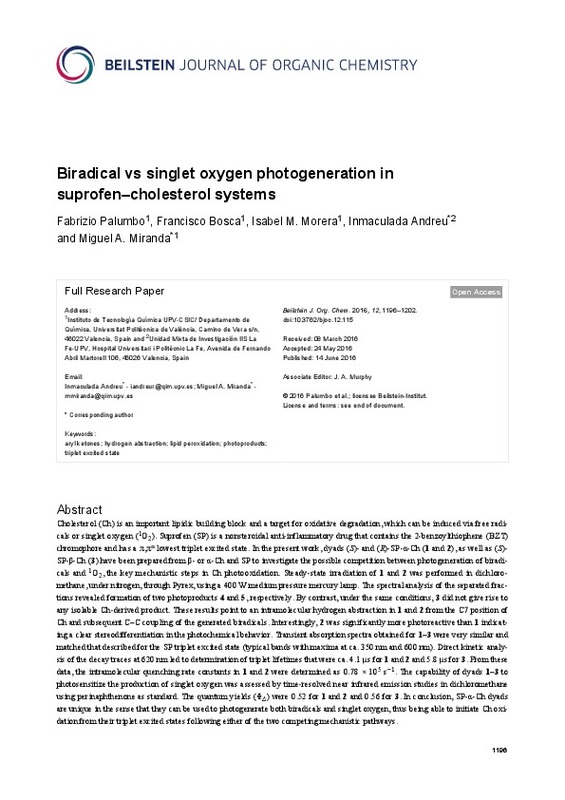JavaScript is disabled for your browser. Some features of this site may not work without it.
Buscar en RiuNet
Listar
Mi cuenta
Estadísticas
Ayuda RiuNet
Admin. UPV
Biradical vs singlet oxygen photogeneration in suprofen cholesterol systems
Mostrar el registro completo del ítem
Palumbo, F.; Bosca Mayans, F.; Morera Bertomeu, IM.; Andreu Ros, MI.; Miranda Alonso, MÁ. (2016). Biradical vs singlet oxygen photogeneration in suprofen cholesterol systems. Beilstein Journal of Organic Chemistry. 12:1196-1202. https://doi.org/10.3762/bjoc.12.115
Por favor, use este identificador para citar o enlazar este ítem: http://hdl.handle.net/10251/72997
Ficheros en el ítem
Metadatos del ítem
| Título: | Biradical vs singlet oxygen photogeneration in suprofen cholesterol systems | |
| Autor: | Palumbo, Fabrizio | |
| Entidad UPV: |
|
|
| Fecha difusión: |
|
|
| Resumen: |
Cholesterol (Ch) is an important lipidic building block and a target for oxidative degradation, which can be induced via free radicals or singlet oxygen (1O2). Suprofen (SP) is a nonsteroidal anti-inflammatory drug that ...[+]
|
|
| Palabras clave: |
|
|
| Derechos de uso: | Reconocimiento (by) | |
| Fuente: |
|
|
| DOI: |
|
|
| Editorial: |
|
|
| Versión del editor: | http://dx.doi. org/10.3762/bjoc.12.115 | |
| Código del Proyecto: |
|
|
| Agradecimientos: |
Financial support from the Generalitat Valenciana (Prometeo Program), the Spanish Government (CTQ2014-54729-C2-2-P and FPU fellowship for F.P.) and the Carlos III Institute of Health (Grant RIRAAF, RETICS program and Miguel ...[+]
|
|
| Tipo: |
|









